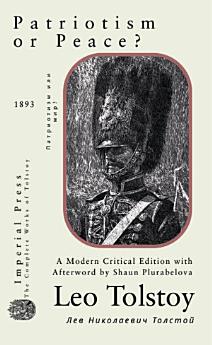Patriotism or Peace?
About this ebook
Written in barely a week, the epistle moves from stock‑exchange panic to Gospel precept in a single sweep, arguing that a society which claims the Sermon on the Mount must not pay for torpedoes. Its first Russian edition—an eight‑page pamphlet issued by a Geneva émigré press to slip past censors—was followed in March 1896 by an English version for the Daily Chronicle, where Tolstoy sets Jesus’ call to love enemies beside maxims from Lao‑Tzu and the Tirukkural to show that non‑violence is no provincial creed. Subsequent reprints, often titled Patriotism or Peace? Letter to Manson, spread from Warsaw to Boston, and Leo Wiener’s 1904 translation kept the piece in print alongside The Kingdom of God Is Within You.
Standing in the company of Erasmus’ Complaint of Peace and William Lloyd Garrison’s non‑resistance sermons, the pamphlet is harsher than its predecessors, for Tolstoy tells every taxpayer that the first drop of frontier blood lies on his own conscience. Read aloud in Russian student circles who refused conscription and quoted at early European peace congresses before the Boer War, its lean arithmetic—“millions obey, so a handful command”—gave activists a terse slogan: choose patriotism or choose peace, never both. More than a century later the dilemma remains unsettled, and Tolstoy’s blunt pages still unsettle any reader who imagines that loyalty to the flag can be squared with the ethic of love.







